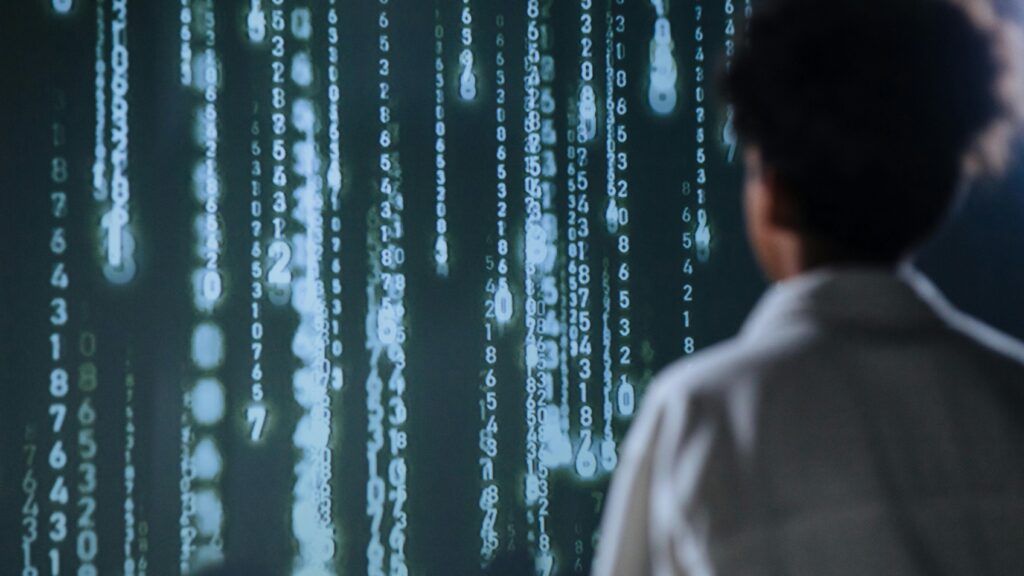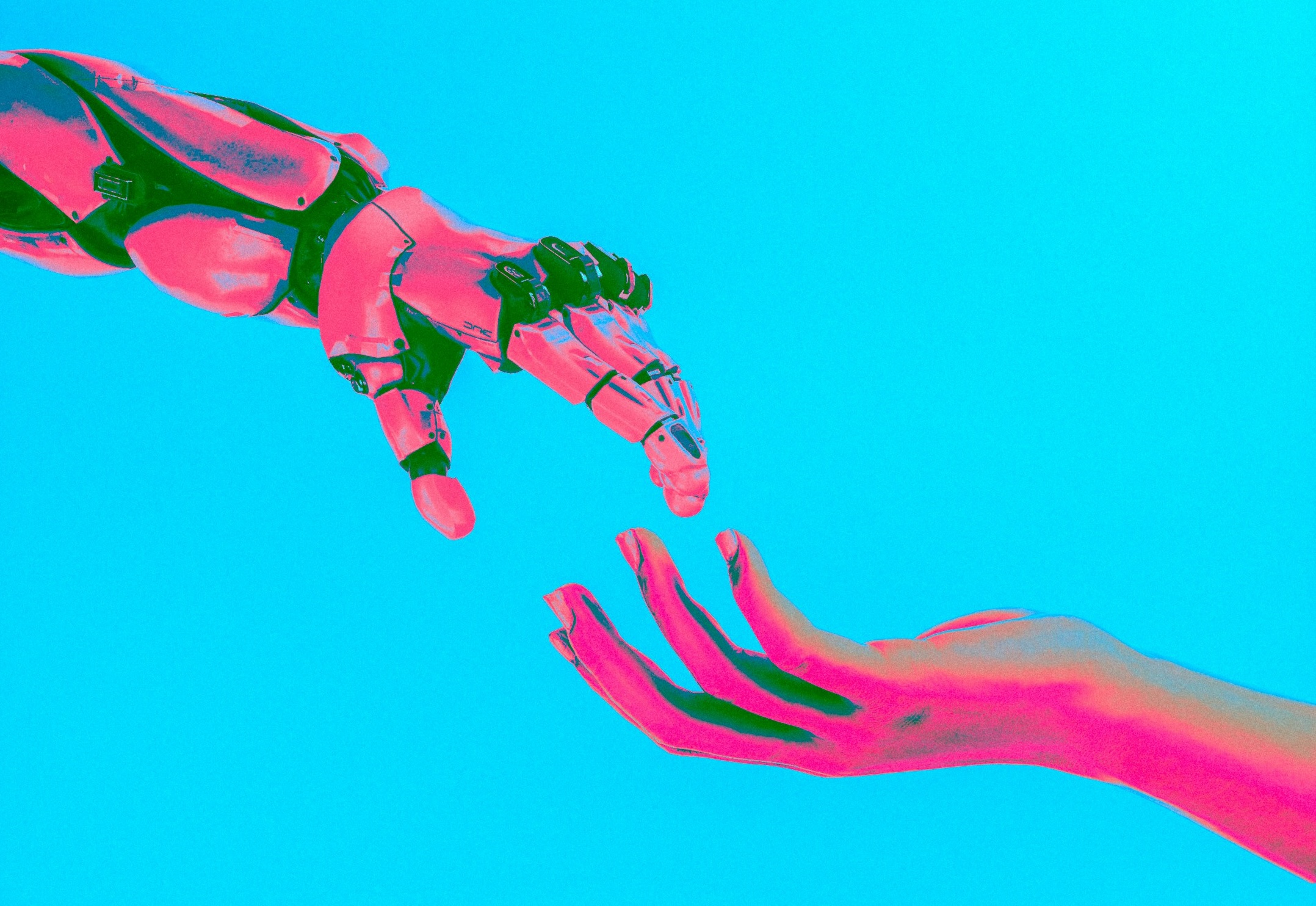How AI Threatens Our Humanity: A Guide to Protecting the Human Condition
There’s a good story in every technological revolution: the promise of ease, the gleam of novelty, and if we’re honest the creeping cost that arrives almost imperceptibly. AI is that story writ large. It offers astonishing capabilities, but it also nudges us towards a subtler, more dangerous loss: the hollowing out of what makes life […]


There’s a good story in every technological revolution: the promise of ease, the gleam of novelty, and if we’re honest the creeping cost that arrives almost imperceptibly. AI is that story writ large. It offers astonishing capabilities, but it also nudges us towards a subtler, more dangerous loss: the hollowing out of what makes life meaningfully human. In this piece I’ll map the terrain: the core human needs machines cannot fulfil, the ways AI is reshaping relationships, the deeper threats to fulfilment, and practical ways we can defend genuine human connection. Along the way I’ve signposted high-quality sources so you can read further.
Core human needs that AI cannot fulfil
AI is brilliant at simulating behaviour; it is not sentient. That distinction matters because human wellbeing rests on needs that require lived, reciprocal human presence.
Connection and belonging
Belonging is grown in the soil of mutual history and shared vulnerability. Algorithms can personalise experiences and mirror preferences, but they do not participate in human communities they don’t keep our secrets, remember our grudges, or celebrate real birthdays. Studies of AI companionship show apparent short-term benefits, but also troubling patterns: users of companion bots often begin lonelier, more dependent and socially isolated over time. (OUP Academic)
Intimacy and love
True intimacy is messy: it asks us to tolerate discomfort, to accept being seen imperfectly, and to take relational risks. An entity engineered always to please never to disappoint, to argue, to need deprives intimacy of its friction and hence of its capacity to transform us.
Recognition and validation
We hunger to be truly recognised by others seen for our motives and struggles, not algorithmically rewarded for popularity metrics. Algorithmic validation (likes, tailored praise) triggers reward pathways but lacks the moral weight of human regard. Neuroscience and behavioural research make clear that digital reward loops can hijack attention and reshape motivation. (Nature)
Purpose and meaning
Purpose grows from contribution, challenge and craftsmanship. As automation takes over repetitive and even creative tasks, the onus shifts: meaning will come from how we choose to be human the relationships we cultivate and the problems we decide to own rather than from tasks machines can cheaply perform. The public is already uneasy about how AI threatens domains we consider inherently human. (Pew Research Center)
Autonomy
Autonomy is an active capacity. When recommendation engines nudge our choices at every turn, our agency is eroded by degrees. Surveillance-style data economies optimise behaviour; they do not respect the inner project of self-governance. (Harvard Business School)
Security and stability
Security in human terms is relational: trust that others will be there, that our vulnerabilities won’t be exploited. AI-driven systems may promise convenience, but they introduce new uncertainties data misuse, algorithmic bias, and the fragility of outsourced care. (The Guardian)
How AI is disrupting human relationships and connections
The effects are not dramatic one-day-to-the-next changes. They are accumulative shifts in habits, expectations and norms.
The rise of AI companionship
Apps and chatbots marketed as companions, therapists or friends proliferate. They can temporarily soothe loneliness and provide 24/7 interaction, but empirical work cautions that such companionship is double-edged: short declines in distress can coexist with longer-term emotional dependency and decreased offline socialising. (OUP Academic)
The illusion of connection
When machines convincingly simulate empathy, we risk mistaking simulation for relationship. This blurring can atrophy our social skills: if we habitually interact with entities that always mirror or placate us, we may become less tolerant of the true unpredictability of people. Research and commentary on this ‘emotional counterfeit’ are increasingly common. (SpringerLink)
Emotional detachment
Predictability and instant gratification condition us. Human feeling is slower, untidy and often inconvenient. Habitual engagement with perfectly calibrated interfaces reduces our capacity for patience, for staying with another’s sorrow, for repairing conflict precisely the skills live training seeks to recover.
The deeper consequences: eroding human fulfilment
This is where the philosophical meets the practical. The risk is not merely technological insufficiency but existential attrition.
Artificial validation
Platforms and personalised AI feed back signals designed to keep us engaged. Over time we can become dependent on those signals for self-esteem. That pattern is not just anecdotal; cognitive and neuroscientific studies link repetitive digital reward loops to changes in attention and motivation. (Nature)
The threat to purpose and meaning
If machines do what we did for meaning, we must reframe what meaningful work looks like. The alternative allowing meaning to be hollowed out by relentless automation of human roles is social and psychological impoverishment. Policy, education and culture must create pathways to new forms of communal contribution. (Pew Research Center)
Losing autonomy
The business model of many digital platforms is behaviour prediction and modification. This is the core insight of surveillance capitalism: behaviour is the commodity. Persistent nudging weakens deliberative choice unless we build personal and institutional defences. (Harvard Business School)
Can we preserve genuine human connections in the age of AI?
Yes but only by design. Connection doesn’t survive by accident in a high-tech world; it needs safeguarding.
Ways to foster human connection in a tech-saturated world
- Reclaim time for unmediated presence: conversation without screens, regular face-to-face learning, and communal rituals that emphasise mutual attention.
- Teach and practise media and information literacy so people can tell generated content from human content and resist hollow forms of validation. UNESCO and the WEF offer practical frameworks for this. (UNESCO)
- Design learning experiences that restore interpersonal skills: listening, conflict repair, empathic questioning not as soft extras, but as core competencies.
Ensuring authenticity in the face of AI automation
- Build norms and tools that flag AI-generated interactions so people can choose authenticity.
- Use AI where it augments human connection (e.g. freeing time for caregiving) and resist outsourcing relational labour to automation. Scholarly literature urges design that supports not supplants human bonds. (SpringerLink)
Conclusion: why we must protect the human condition in a tech-driven future
AI is not an enemy to be abolished, it is a technology to be governed, shaped and humanised. The question is not whether machines will get cleverer (they will), but whether we will be cleverer about being human. That requires deliberate choices: to prioritise live encounters, to teach critical thinking and media literacy, and to design systems that enhance human dignity rather than undermining it.
At The Sustainable Human we believe the best answer is practical and hopeful: train people face to face in the skills that machines cannot replicate. Teach people to speak, listen, judge, care and connect. Rebuild civic habits of presence and responsibility. In short: cultivate what algorithms cannot generate the art of being human.
If you’d like, I can follow this with a concise one-page handout of the key references below, or suggestions for a half-day workshop that translates these ideas into exercises for your first public events.
Selected references
- De Freitas, J. AI Companions Reduce Loneliness (Journal publication / working paper). (OUP Academic)
- OpenAI & MIT Media Lab research coverage: Heavy ChatGPT users tend to be more lonely. The Guardian. (The Guardian)
- Zuboff, S. The Age of Surveillance Capitalism / Harvard Business Review and HBS commentary on surveillance capitalism. (Harvard Business School)
- Lindström, B. et al., A computational reward learning account of social media behaviour. (Nature Communications). (Nature)
- Stanford insights on social-media addictive mechanisms. (Stanford Medicine)
- APA / clinical cautions on chatbots replacing therapists. (apaservices.org)
- Springer: The impacts of companion AI on human relationships: risks and benefits. (SpringerLink)
- Pew Research Center: How the US public and AI experts view artificial intelligence and related public attitudes reports. (Pew Research Center)
- UNESCO: Media and Information Literacy resources and curriculum. (UNESCO)
Nature / PMC and other peer-reviewed articles on social media, neurobiology and mental health impacts. (PMC)
Tags
No tags assigned to this post.
You may also like

We are living in extraordinary times. The promise of artificial intelligence in particular your own AI assistant heralds a future where tasks are faster, smarter, seemingly simpler. But as someone who has spent the last 27 years trying to help humans connect with each other I find myself increasingly concerned. Because behind the shiny surface […]

Introduction We live in a world that moves fast. Too fast. In this relentless pursuit of efficiency, convenience, and productivity which has been turbocharged by technology, something fundamental is slipping through our fingers our ability to truly connect with one another. You know what I mean, the kind of communication that reminds us of our […]

There are moments in life when we look up from whatever you are doing and realise we’ve quietly crossed a line. The world around us has changed – not dramatically, – but gradually, imperceptibly, until the air feels different. I feel it, the culture feels it and I’m sure you feel it too. Artificial Intelligence […]